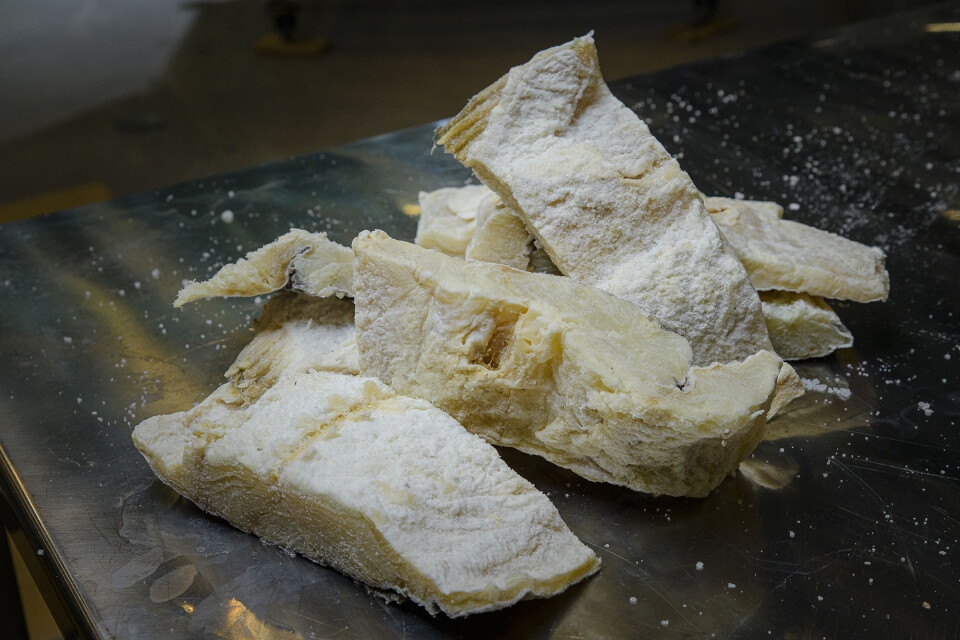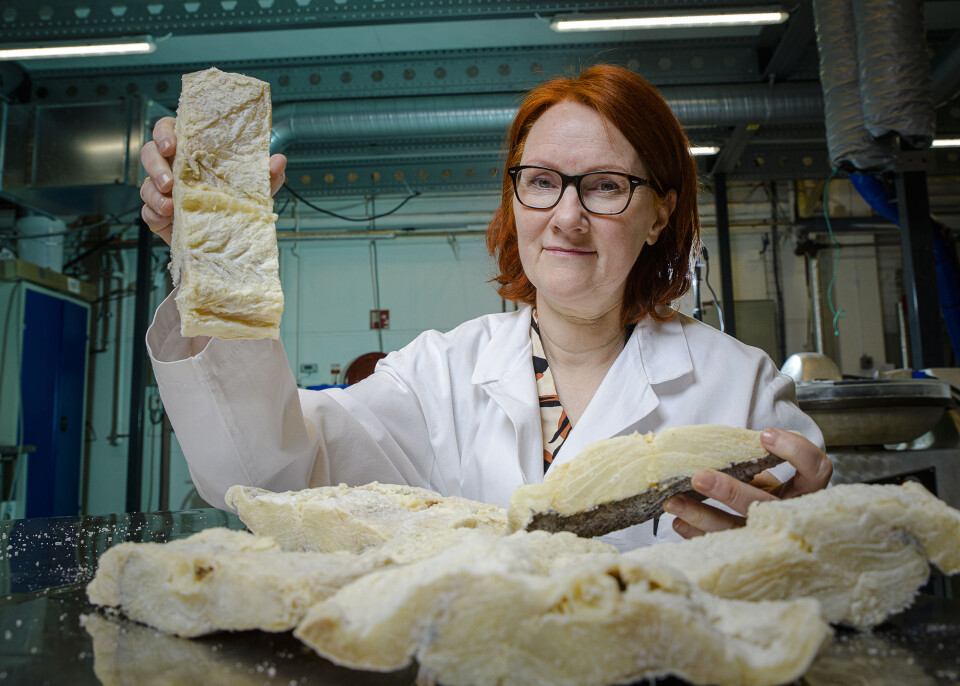
Matured cheese and ham - yes please, but what about matured clipfish?
A Norwegian google search for "matured food" displays results for balsamic vinegar, cured meat, fermented trout and many types of cheese. Why isn’t clipfish on the list?
Norway has age-long traditions of producing clipfish, and we have exported our products to Portugal and Brazil, among others, for a long time. Clipfish is often eaten when celebrating and on special occasions. One could be forgiven for thinking that Brazilians and Portuguese know more about Norwegian clipfish than we do ourselves.
Paradoxically, Norwegians are well acquainted with both Parma and Serrano ham, where these products are made, matured, and not least, their smell and taste. Today, these products are readily available in Norwegian stores. Often, a knowledgeable and proud seller behind the counters of delicatessen shops is ready to answer our most detailed questions about these products.
Matured clipfish – of course it is possible!
I would love to buy a well-matured clipfish from the store, in stylish packaging labelled with the maturing time. Admittedly, there aren’t that many matured clipfish products on the Norwegian market, but I would really like a wider range to choose from, such as saithe, cusk and cod, different lengths of maturing (1 year, 2 years, 3 years, etc.), in a range of packaging sizes. Why do I want to buy such products? Well, because I know that clipfish that has been stored for a long time has developed a more mature smell, and dishes made of such fish taste absolutely fantastic.
Can clipfish be stored over many years? Yes, as long as it is stored at a low temperature, there’s no problem. The surface of the fish becomes slightly more yellow and darker due to oxidation and rancidification processes. However, these are natural processes.
At Nofima, trials have shown that clipfish can keep for at least 2 years when stored at a maximum of 4 °C. Providing low temperatures are maintained, we have no indications that clipfish cannot be stored for even longer periods. I’ve even tasted rehydrated clipfish after it had been stored for 5 years at 4 °C. It tasted lovely! Of course, newly dried clipfish also makes a great meal, but the taste will be more neutral compared to the ones being stored longer.

Salt in and salt out
What is it that allows the fish to be stored for so long? The answer is salting and drying. The process of making clipfish involves putting layers of salt and split fish on top of each other, this allows the water in the fish to change places with the salt. In other words, salt into the fish and water out. The salted fish (saltfish) is then dried and becomes clipfish. A lot of salt followed by a drying process ensures that bacteria, that usually cause problems in fresh fish, do not get a chance to cause harm and thereby shorten the shelf life. Therefore, salting combined with drying is an effective method of preservation. Before clipfish can be used, its salt content must be reduced. This is done by rehydrating the fish. In other words, water into the fish and salt out.
Why does matured clipfish have more pronounced flavour compared to newly produced clipfish? Well, by storing the fish for longer periods of time, the proteins that are present in the fish’s flesh are broken down into smaller units with the help of enzymes that are naturally present in the fish. We then say that the product matures. Longer periods of storage results in a more matured product.
We have investigated the development of odour in clipfish by using a sensory panel. These are taste judges who are trained in assessing and describing different food products. Descriptions such as “total odour intensity”, “quayside”, “feed”, “fish” and “sharp/pungent” were assessed as being more prominent, but not unpleasant in relation to fish that had been stored for two years compared to a newly-dried clipfish. The sensory panel also observed undesirable odour characteristics such as “fermented/sour” in relation to clipfish that had been stored for a long time, but this was far less prominent compared to the other odour characteristics.

Knowledge and sense of pride
I think the reason why people don’t associate clipfish with words like “matured” is due to the lack of knowledge, experience and pride regarding their own culinary traditions. For example, how much does the average consumer in Norway really know about clipfish? How often are meals that include clipfish prepared in Norwegian homes? How often are children taught how to rehydrate clipfish and make bacalao dishes in the school kitchen? The other day, my child came home and told me that they had made an Indian chicken curry at school. This is all well and good, but it is food for thought that other countries’ specialties are more familiar to Norwegian children’s plates than our own.
Clipfish is easy to prepare, it just takes a little time to rehydrate. Today, however, one can purchase products that are already rehydrated. This makes preparation a lot easier, and making a meal with clipfish won’t take more time than preparing other types of food.
In order to create a sense of pride around a Norwegian culinary tradition, its history needs to be conveyed in good ways. I also think it’s about helping children to create good habits at an early age, and giving them the opportunity to try what’s new. My research colleagues have shown that when children join in with the cooking, they increase their chances of enjoying and choosing that type of food later.
I also think it is about choosing Norwegian specialties on special occasions, such as when we invite guests to a dinner party or during the festive season. If we serve clipfish with a sense of pride and a good history, we can hope that it will reach new heights as matured festive food. I truly recommend it!
I’m looking forward to meet an experienced, knowledgeable and proud seller selling several types of matured Norwegian clipfish at a delicatessen shop where clipfish has an equally favourable location as matured hams and cheeses.







